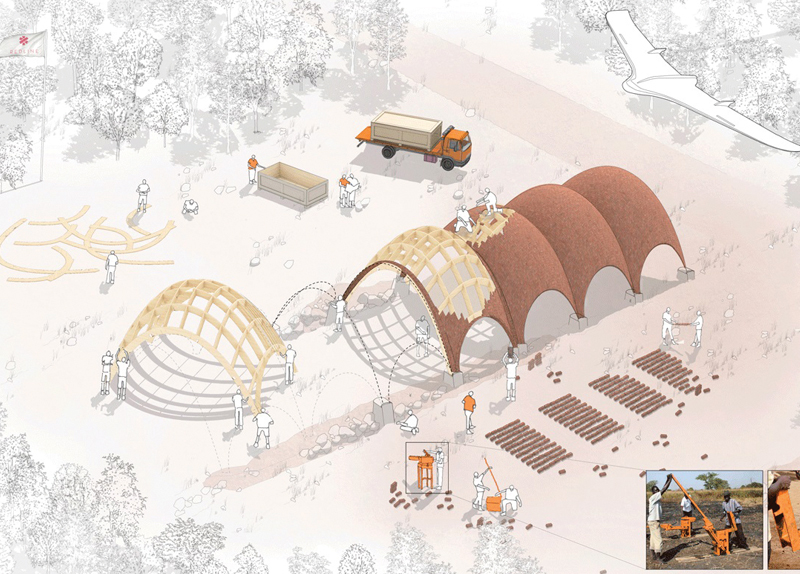"DRONE PORT" WILL SUPPORT RWANDA
The first “drone port” for both citizen and commercial use is to be built in Rwanda, Africa. The Civil Aviation Authority of Rwanda is outlining regulations on the unmanned flying vehicles, and it hopes that they will be finalized before the end of 2016, when construction begins. British architect Norman Foster assumes that the port is scheduled to be established by 2020.
As its nickname “land of a thousand hills” indicates, Rwanda is notorious for having transportation difficulties. So, Foster + Partners, an architectural firm in England, drew up plans to build three port buildings for drones, which will carry medical supplies for emergencies and other commodities, by air. It is expected that the flying carriers will be able to geographically cover about half of the country.
The port will use special drones with 3-m wingspans that can fly around 100 km and hold packages up to 10 kg. Larger, stronger drones may be in operation by 2025. Related facilities, such as health clinics, a drone production center, and a post office, will be near the drone port.
Jonathan Ledgard, director of Afrotech, described the plan as a way “to improve health and economic outcomes in Africa - and beyond.”

VOCABULARY:
commercial 상업적인
outline 기술하다
finalize 마무리하다
assume 가정하다, 예상하다
notorious 악명 높은
firm 회사
draw up 만들다
commodity 상품, 물품
wingspan 날개 길이
in operation 운용 중인
facility 시설
outcome 결과
KOREAN TRANSLATION:
르완다에 세계 첫 드론 공항 건설 예정
시민들과 상업적 이용을 위한 최초의 “드론 공항”이 아프리카 르완다에 건설될 예정이다.
르완다의 민간 항공국은 무인 비행체에 대한 규정을 기술하고 있고, 건설이 시작되는 해인 2016년이 가기 전에 그 작업이 마무리될 것을 희망한다.
영국의 건축가인 Norman Foster는 공항이 2020년까지는 건설될 것으로 추측한다.
“수천 개의 언덕이 있는 땅”이라는 별명에서 알 수 있듯, 르완다는 교통에 어려움이 있기로 악명 높다.
그래서, 영국의 건설 회사인 Foster + Partners는 3개의 드론 공항 건설 계획을 만들었는데, 그곳의 드론은 긴급 상황을 위한 의료 물품과 다른 소모품을 공중으로 운반할 것이다.
드론의 범위는 지리적으로 나라의 대략 절반 정도에 걸칠 것으로 예상된다.
드론 공항에서는 날개 길이가 3m이고 약 100km 거리를 비행할 수 있으며 최대 10kg의 무게를 견딜 수 있는 특별한 드론을 이용할 것이다.
더 크고 튼튼한 드론이 2025년에는 준비될 것이다.
건강 클리닉, 드론 생산 센터, 그리고 우체국과 같은 관련 시설이 공항 근처에 있을 것이다.
Afrotech의 책임자인 Jonathan Ledgard는 그 계획이 “아프리카의 건강과 경제적 결과물을 개선하는 것, 그리고 그것을 넘어선” 방법이라고 묘사했다.